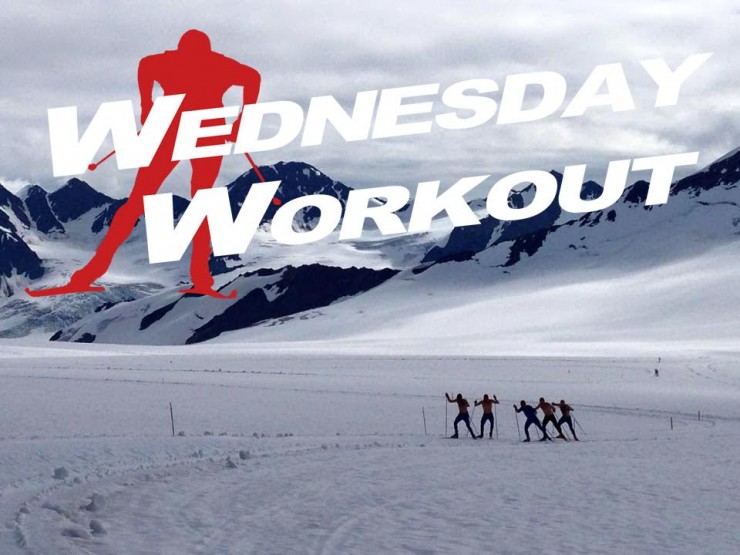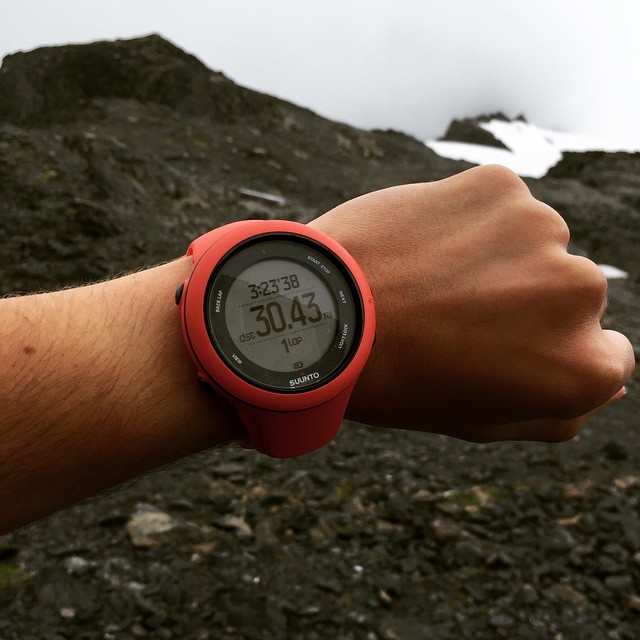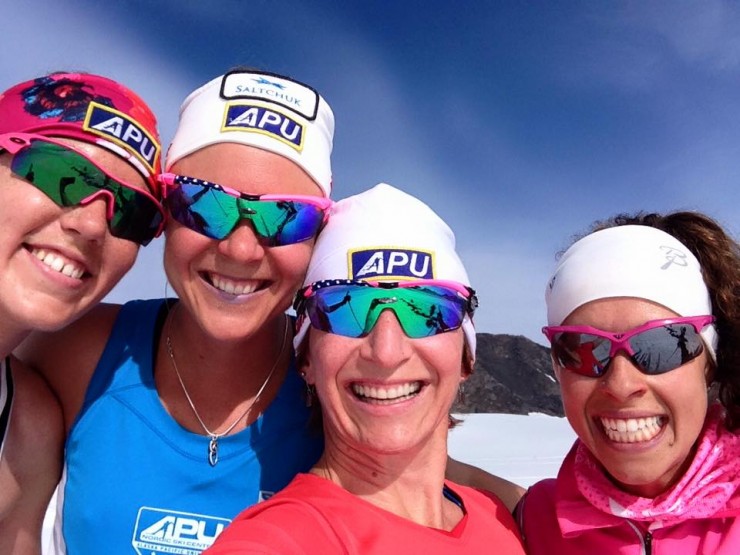
Every summer, the Alaska Pacific University Nordic Ski Club (APUNSC) takes full advantage of Eagle Glacier, just south of Anchorage and some 5,700 feet above Girdwood, Alaska, holding on-snow camps there multiple times throughout the offseason. The APU Elite Team, with head coach Erik Flora, recently completed a camp on the glacier, and while conditions for the last day’s 50-kilometer ski softened and slowed as expected, athlete Becca Rorabaugh explained how she survived the 30-mile workout: “Beautiful weather and fabulous crunchy snow at the start…” she posted on Instagram on July 11. “Knowing I was approaching my 50km goal kept me focused through the slushy last bit.”
Here is the 26-year-old Rorabaugh’s recap of the ultimate over-distance ski, which, she points out, can also be done on dry land (i.e. rollerskis):
***

At last week’s APUNSC Elite Team glacier camp there were many hours trained and as a result, many tired athletes. After a week of hard work the last day is always a 3-hour ski. This can be either a fantastic opportunity to duke it out with teammates and see what you have left, or a really rough prospect to handle. Especially if the snow looks like it’s going to get really soft, it can be a tough workout.
The benefits of doing a long final workout are worth the slush-fest, and the effects rely on fatigue that has built throughout the week. If you’ve ever finished a long race and found that you lacked the snappy finishing kick that you were looking for, this is for you.
Flora sat us down beforehand and talked about trying to keep our movement quality throughout the workout, saying that making good race-like motions was paramount to skiing many hours. If we could find a way to make those high-quality movements even without access to the easy energy of fresh ski-specific muscles, we could recruit and hone the sequence of secondary muscle groups. Those are the muscles you’re relying on at the end of a race, and they’re difficult to train. The secondary ski muscles only engage when the primary ones cannot do the work, so you have to be fatigued to train secondary muscle sequence and recruitment. Keeping good technique throughout the workout reinforces good technique at the end of races, when you need it the most.

This last Saturday the day dawned clear and crusty, which on Eagle Glacier means two things. 1: The snow is going to be really crunchy and fast when you start, and 2: if it doesn’t cloud over and start raining soon, you will be skiing on mashed potatoes by 10:00AM.
Sadie Bjornsen and I began talking about trying to get 50km of skiing in, something made possible by the crusty skiing in the beginning, and I was excited to keep track of our progress using my new Suunto Ambit3. We estimated 50km to be six laps of the course, and we turned out to be within a kilometer or two of accurate.
I always ski better throughout the workout if I feel that I am aggressively pursuing a goal, whether that’s a time, a distance, or just hanging on to my Alaska Pacific University Nordic Ski Center teammates for dear life. Starting into a long workout with a sense of purpose really sets the tone, and we started with strong intentions of skiing 50km. We skied 4 loops in the first half of the time, just trying to get in some kilometers before the crust broke down. The final two loops took almost twice as long as the first ones: once the crust breaks on a sunny Eagle Glacier day, it really disappears!
“I always ski better throughout the workout if I feel that I am aggressively pursuing a goal, whether that’s a time, a distance, or just hanging on to my Alaska Pacific University Nordic Ski Center teammates for dear life.” — Becca Rorabaugh, APU Elite Team member
The second half, in soft conditions and with tired legs, is the part that really counts. This is where thinking about a single cue like ‘let your hands swing up’ makes the biggest difference. It’s where technique breakthroughs occur because you’re so tired that you let yourself try different things. Your usual neural sequences are shakier, and you’re able to ingrain new things. At times like that, when you’re pushing the limits of good focused movement, having a defined finish line helps keep motivation. Perhaps most importantly, skiing with friends lets you know whether your technique is working. When you have to make subtle adjustments to keep up, you make the kinds of innate technical improvements that you can find again on race day.
If you’re doing this workout in town, you can still benefit from a long rollerski at the end of a big week. The second half is still the key part, and it’s still important to focus on a single cue. I always recommend doing it with people that push you a little because that’s when you learn to hang on for dear life, adjust movements, and finish strong. Knowing you can ski well when you’re tired will give you the confidence to push at the end of any tough race, be it the Birkie, US Nationals, or the Tour de Ski.
50 k Over-Distance Training Ski Checklist
– Focus on high-quality, race-like motions (and secondary muscle groups if you’re tired from previous workouts)
– Maintain good technique to ensure you’ll have similar technique at the end of a long race
– Get out early to avoid deteriorating conditions (i.e. snow- or weather/heat-related)
– Start with a sense of purpose (you are going to complete 50 k!) and remember that intention when you start to fatigue, especially in the second half of the workout
– Bring a buddy: “Skiing with friends lets you know whether your technique is working.” And pick people that can challenge you.



